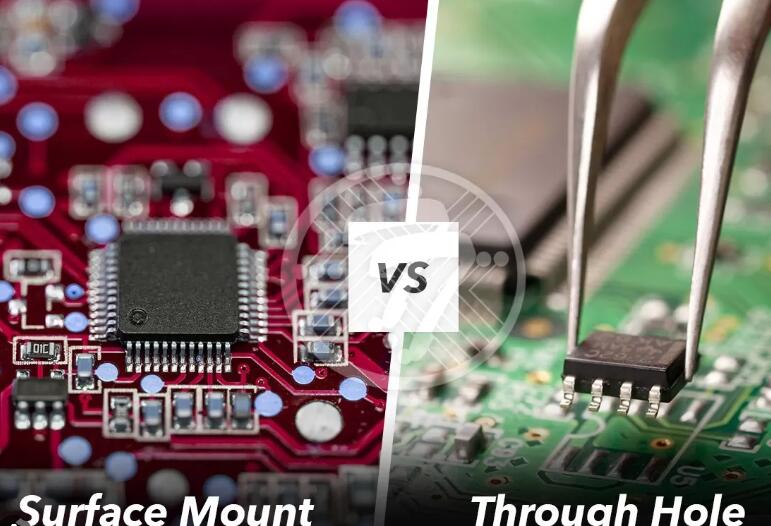Surface Moun mounting technology is currently one of the most popular and widely used electronic product manufacturing technologies. It is a technique of directly pasting electronic components onto a printed circuit board (PCB), rather than installing the components on the opposite side of the board through drilling holes. This mounting method is faster and more efficient than traditional manual welding methods.

Through hole is the process of placing parts on one side of the board and welding the pins onto the other side. This type of part requires a significant amount of space and requires drilling a hole for each pin. So their joints take up space on both sides, and the solder joints are also relatively large.
Surface mount
Surface mount is a method for assembling electronic circuits, where components are directly installed or placed on the top surface of a printed circuit board.
The surface mount has flat coplanar tails or leads that allow components to be placed on flat exposed tracks on a PCB. There is no need for small holes on the PCB, and the exposed areas are covered with solder paste through the template. Then place the components (usually by machine) into the solder paste and heat the PCB to reflow the solder paste.
Surface mount technology is the most common method in surface mount technology. Surface mounting can be achieved by removing electronic components of various sizes and shapes, such as capacitors, resistors, and transistors, from the feeder through automated equipment, placing them in precise positions on the PCB, and finally welding them. This method eliminates the need for manual fine-grained operations on each electronic component, making it more efficient and convenient.
Advantages:
1) Miniaturization: surface mount electronic components are small in size and light in weight, which can greatly reduce the size and weight of electronic products.
2) High performance: surface mount electronic components can fully utilize the space of the circuit board, improve the performance of the circuit board, and reduce the noise and electromagnetic interference of the circuit board.
3) High production efficiency: The surface mount process can automate production with fast speed, reducing the risk of manual errors.
4) Realizing high-density layout, fully utilizing board area, reducing component spacing, and making circuit boards more compact and lightweight.
5) Improve circuit performance, shorten the transmission distance of electrical signals, reduce crosstalk and broadband loss, and enhance the reliability of components.
Through hole
Through holes is another common way of assembling electronic products. Unlike surface mount, THT punches holes on the PCB and inserts components into the holes from the bottom, then welds them. This method is usually used for assembling complex circuit boards, as THT components are larger than surface mount components, making them suitable for high-power devices and larger circuit modules.
The through-hole insertion technology can generate strong mechanical bonding and is a mature process. Compared to surface mount technology, through hole insertion technology has a smaller number of variables that may cause welding problems, and is usually well-researched and understood.
Advantages:
THT provides better mechanical strength.
THT is suitable for applications that require manual cleaning and maintenance.
Disadvantages:
The cost of THT is usually higher than that of surface mount.
The connection time of THT components is longer than that of surface mount components.
The main difference between the surface mount and through hole is that surface mount does not require drilling holes on the PCB; surface mount components are much smaller; surface mount components can be installed on both sides of the circuit board. The ability to install a large number of small components on a PCB allows for denser, higher performance, and smaller PCBs.